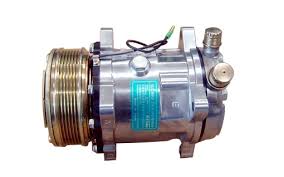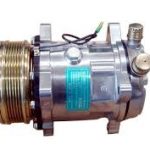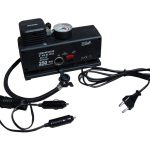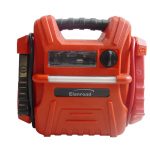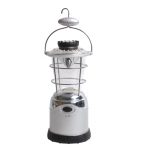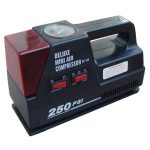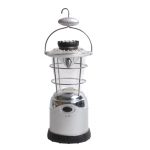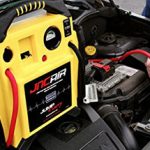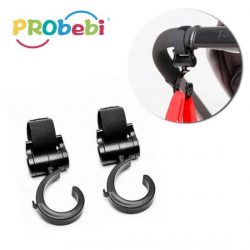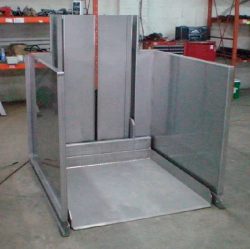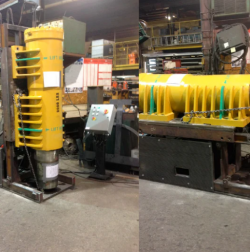Linsheng , Automotive Air Conditioning Compressor: What Kinds?
linsheng said: The automotive air conditioning compressor is the heart of the automotive air conditioning refrigeration system, which plays the role of compressing and conveying refrigerant vapor.
A. According to different working principles, air-conditioning compressors can be divided into fixed displacement compressors and variable displacement compressors.
Fixed displacement compressor
The displacement of the fixed displacement compressor is proportional to the increase of the engine speed. It can not automatically change the power output according to the cooling demand, and has a greater impact on the engine fuel consumption. Its control generally collects the temperature signal of the evaporator outlet. When the temperature reaches the set temperature, the compressor electromagnetic clutch is released and the compressor stops working. When the temperature rises, the electromagnetic clutch is combined and the compressor starts to work. The fixed displacement compressor is also controlled by the pressure of the air conditioning system. When the pressure in the pipeline is too high, the compressor stops working.
2. Variable displacement air conditioner compressor
The variable displacement compressor automatically adjusts the power output based on the set temperature. The air conditioning control system does not collect the temperature signal of the evaporator outlet, but automatically adjusts the outlet temperature according to the pressure change signal in the air conditioning pipeline to automatically adjust the outlet temperature. In the whole process of refrigeration, the compressor is always working, and the adjustment of the cooling intensity is completely controlled by the pressure regulating valve installed inside the compressor. When the pressure at the high pressure end of the air conditioning line is too high, the pressure regulating valve shortens the piston stroke in the compressor to reduce the compression ratio, which reduces the cooling strength. When the pressure at the high pressure end drops to a certain extent and the pressure at the low pressure end rises to a certain extent, the pressure regulating valve increases the stroke of the piston to increase the cooling strength.
Working style classification
B. According to different working methods, compressors can be generally divided into reciprocating and rotary type. Common reciprocating compressors are crankshaft connecting rod type and axial piston type. Common rotary compressors have rotating vane type and scroll type. formula.
Crankshaft connecting rod compressor
The working process of this compressor can be divided into four, namely compression, exhaust, expansion, and suction. When the crankshaft rotates, the piston reciprocates by the connecting rod, and the working volume formed by the inner wall of the cylinder, the cylinder head and the top surface of the piston periodically changes, thereby functioning to compress and transport the refrigerant in the refrigeration system.
The crankshaft connecting rod compressor is the first generation compressor. It has a wide application, mature manufacturing technology, simple structure, low requirements on processing materials and processing technology, and low cost. It has strong adaptability, can adapt to a wide range of pressure and cooling capacity, and is highly maintainable.
However, the crankshaft link compressor also has some obvious disadvantages, such as the inability to achieve higher speeds, the large and heavy machine, and the inability to achieve weight reduction. The exhaust gas is discontinuous, the airflow is prone to fluctuations, and there is a large vibration during operation.
Due to the above characteristics of the crankshaft link compressor, few small displacement compressors have adopted this type of structure, and the crankshaft link compressors are currently mostly used in large displacement air conditioning systems for passenger cars and trucks.
2. Axial piston compressor
Axial piston compressors can be called second-generation compressors. Commonly, there are rocker or swash plate compressors, which are the mainstream products in automotive air conditioning compressors.
The main components of the swash plate compressor are the main shaft and the swash plate. Each cylinder is arranged around the main axis of the compressor, and the direction of movement of the piston is parallel to the main axis of the compressor. The pistons of most swash plate compressors are made into double-headed pistons, such as axial 6-cylinder compressors, with 3 cylinders at the front of the compressor and 3 cylinders at the rear of the compressor. The double-headed piston slides one after the other in the opposite cylinder, and when the one end piston compresses the refrigerant vapor in the front cylinder, the other end piston sucks the refrigerant vapor in the rear cylinder. Each cylinder is equipped with high and low pressure valves, and a high pressure tube is used to connect the front and rear high pressure chambers. The swash plate is fixed with the compressor main shaft, and the edge of the swash plate is fitted in the groove in the middle of the piston, and the piston groove and the slant plate edge are supported by the steel ball bearing. When the main shaft rotates, the swash plate also rotates, and the edge of the swash plate pushes the piston to reciprocate axially. If the swash plate rotates once, the two pistons before and after the pistons are compressed, vented, expanded, and inhaled for one cycle, which is equivalent to two cylinders. If it is an axial 6-cylinder compressor, the cylinder section is evenly distributed with 3 cylinders and 3 double-headed pistons. When the main shaft rotates for one week, it is equivalent to 6 cylinders.
The swash plate type compressor is easier to achieve miniaturization and weight reduction, and can achieve high speed operation. Its compact structure, high efficiency and reliable performance are widely used in automotive air conditioners after variable displacement control.
3. Rotary vane compressor
The rotary vane compressor has two circular and elliptical cylinder shapes. In a circular cylinder, the main shaft of the rotor has an eccentricity from the center of the cylinder, so that the rotor abuts between the suction and exhaust holes on the inner surface of the cylinder. In an elliptical cylinder, the main axis of the rotor coincides with the center of the ellipse.
The blades on the rotor divide the cylinder into several spaces. When the main shaft drives the rotor to rotate one revolution, the volume of these spaces constantly changes, and the refrigerant vapor also changes in volume and temperature in these spaces. Rotary vane compressors do not have an inspiratory valve because the vanes accomplish the task of inhaling and compressing the refrigerant. If there are 2 blades, the spindle will rotate twice a week. The more blades, the smaller the compressor’s exhaust fluctuations.
As a third-generation compressor, the rotary vane compressor can be made small in size and weight, easy to arrange in a narrow engine compartment, combined with the advantages of low noise and vibration, and high volumetric efficiency. Get a certain application. However, the rotary vane compressor requires high processing precision and high manufacturing cost.
4. Scroll compressor
This type of compressor can be called a 4th generation compressor. The structure of the scroll compressor is mainly divided into two types: dynamic static type and double revolution type. At present, the dynamic and static application is the most common. Its working components are mainly composed of a moving turbine and a static turbine. The structures of the dynamic and static turbines are very similar. They are composed of end plates and involute scrolls protruding from the end plates. The two are eccentrically arranged and differ by 180°, the static turbine is stationary, and the moving turbine is eccentrically rotated by the crank shaft under the constraint of the special anti-rotation mechanism, that is, there is no rotation, only revolution.
Scroll compressors have many advantages. For example, the compressor is small in size and light in weight, and the eccentric shaft that drives the moving turbine can rotate at a high speed. Because there are no suction and exhaust valves, the scroll compressor operates reliably and is easy to implement variable speed motion and variable displacement technology. The plurality of compression chambers work at the same time, the gas pressure difference between adjacent compression chambers is small, the gas leakage amount is small, and the volumetric efficiency is high. Scroll compressors have become more and more widely used in the field of small refrigeration due to their compact structure, high efficiency and energy saving, low vibration and low noise, and operational reliability. Therefore, they have become one of the main directions for the development of compressor technology.
https://www.linsheng.com
